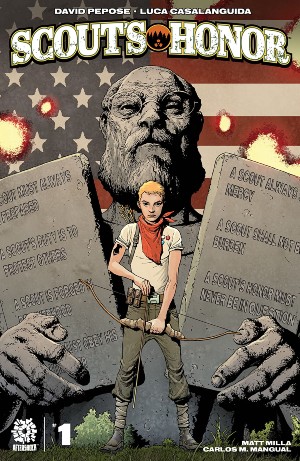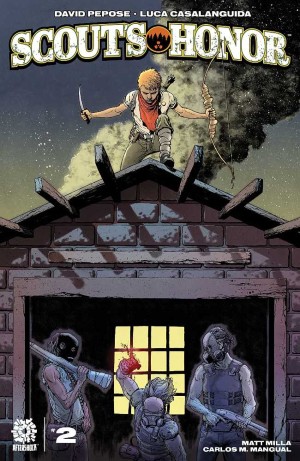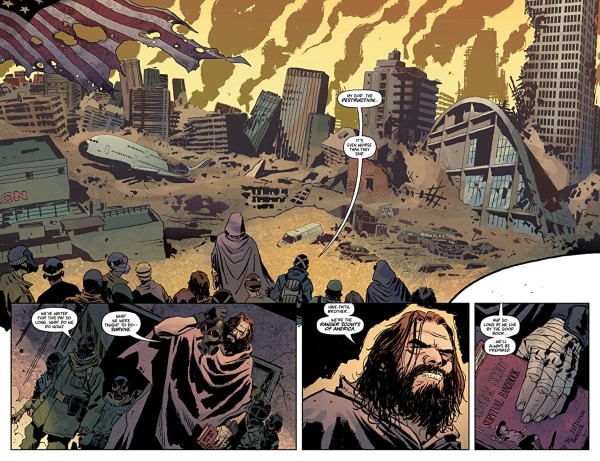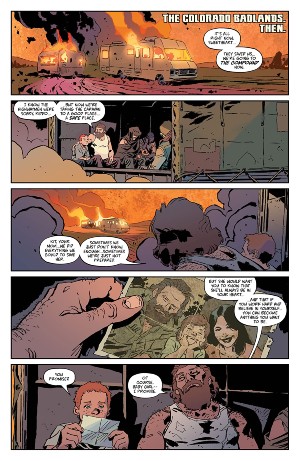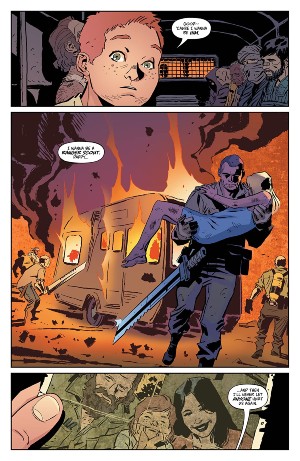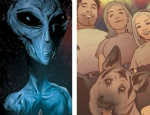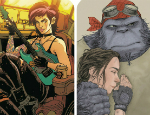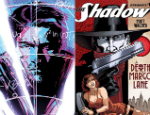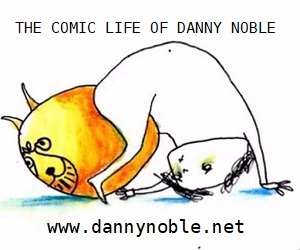“Boy Scout” is a common shorthand for decency. Or at least a specifically American brand of decency, one which prioritises punctuality and obedience, grafting virginal pluckiness onto wilderness preparation. Frontiersman with the ruggedness sanded off. So being a Boy Scout is a civilising mission, not only in survivalist activities, but following moral principles. But what happens when these principles, often controversial for their conservative leanings, become codified as law? Scout’s Honor imagines survivors emerging from bunkers 286 years after nuclear annihilation, clutching to the “Ranger Scout” guidebook as their new gospel. Its tenets become imbedded into the new societal order, including granting merit badges to the young troops, keeping the women at home, and ensuring “a Scout obeys his Scoutmaster without question.”
Scout’s Honor’s deadly post-apocalyptic wasteland recalls Mad Max, and more specifically, the Fallout video-games which recontextualised ‘50s Atomic Age Americana into an actual nuclear landscape. There’s also a dash of Mulan, as the high-achieving scout Kit is hiding a secret from their fellow rangers. More than one by the end of Scout’s Honor’s first issue, as a cliff-hanger destabilises the foundations this new society was build upon. Scout’s Honor is about religion – clearly shown by the looming statue of the Ranger Scout’s creator and “prophet”, Dr Jefferson Hancock, clutching the guidebook’s “laws” like Moses’ Stone Tablets – and how such commandments become interpreted and enforced (and what they exclude).
Although such thematic investigations are largely in the background of these first two introductory issues. Instead Scout’s Honor focuses upon the adventurous missions of Kit and close friend (and son of the scoutmaster) Dez. Their battles against “Gamma Boars” or colourful psycho “highwaymen” are wonderfully rendered by Luca Casalanguida, his artwork being vibrant and exciting with touches of grit, especially in the dirty touches to the ranger settlement and the hardened expressions of Kit. Matt Milla’s colouring also adds an earthen atmosphere to the post-apocalyptic setting, but pops out in the more expressive action-heavy sequences like crashing cars or tentacled robots. Or even the otherworldly purple haze when Kit and Dez gaze out together upon the Ranger compound.
David Pepose’s plotting perhaps gets so swept up in such action and fast-paced beats that it doesn’t leave much room for rumination. Carlos L. Mangual’s lettering elegantly pulls readers along the entire issue, but the flipside is there are no panels without dialogue or captions. Sometimes Scout’s Honor feels breathless with its introductions, bounding between interactions and destinations without letting such dynamics settle in. But this is commonplace in introductory issues, and Pepose does solidly establish the broad-strokes of each character and their motivations, especially our protagonist Kit. Later issues may delve deeper into the rich premise of Scout’s Honor, but so far, the team earn marks for establishing an intriguing spin on the post-apocalypse genre with some thrilling first issues.
David Pepose (W), Luca Casalanguida (A), Matt Milla (C), Carlos M. Mangual (L) • AfterShock Comics, $3.99
Review by Bruno Savill de Jong





